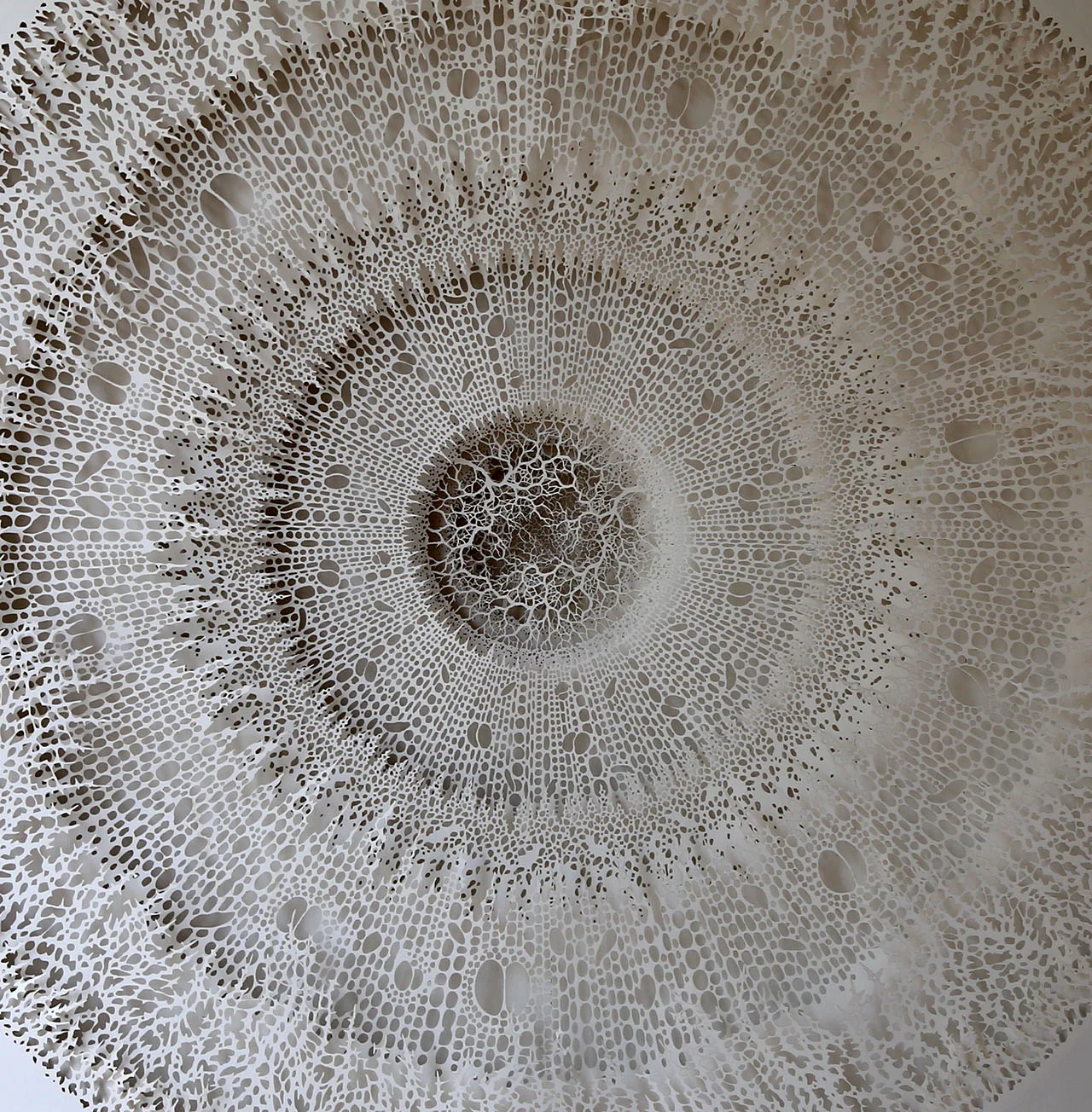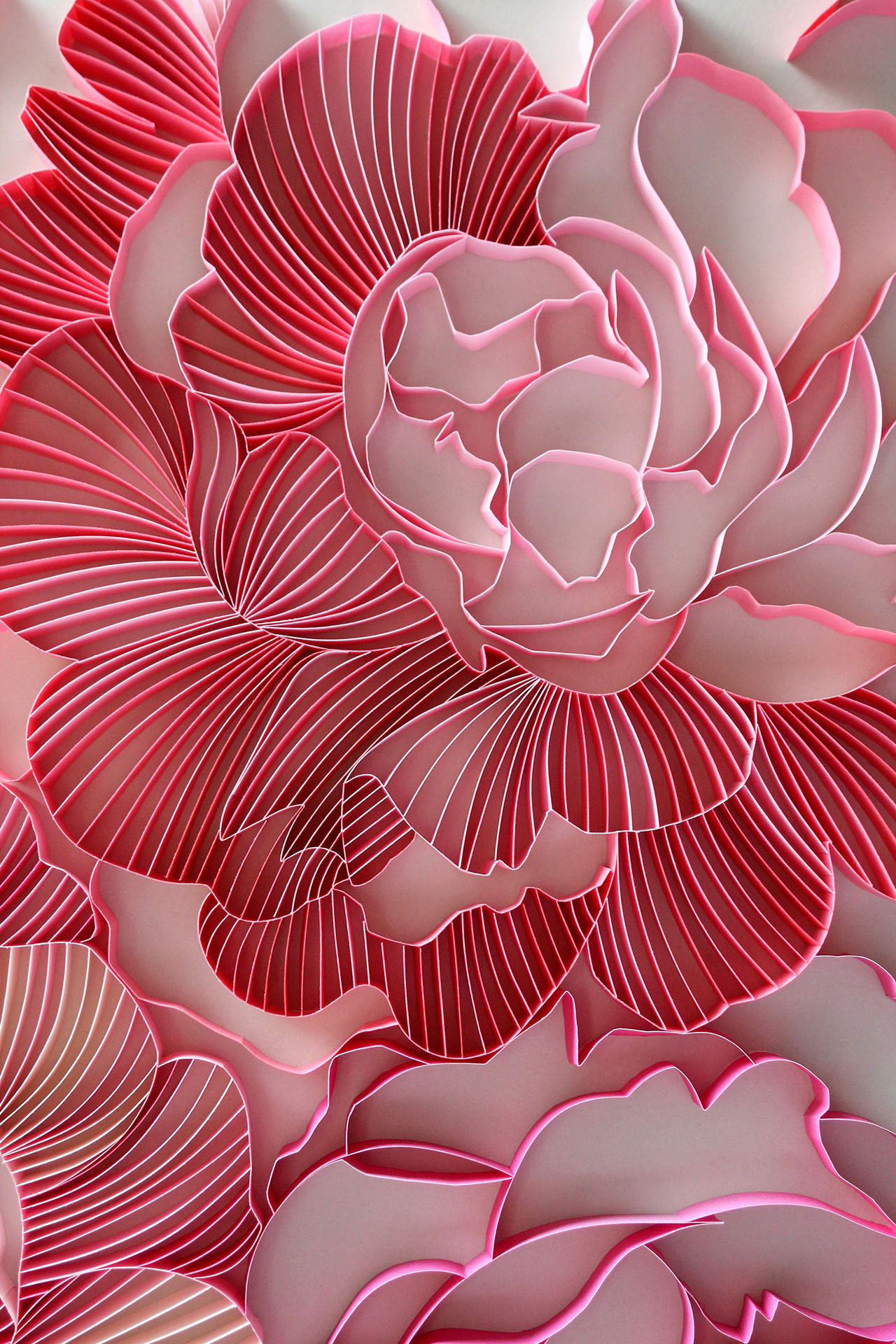ROGAN BROWN || When Art and Science Fuse to Create Intricate Paper Sculptures

Art and science may seem like different worlds, but when the two collide, they can create something beyond our own imagination, altering the way we view the world.
When we look for creative inspiration, we often turn to our immediate surroundings - be it the peaceful sky of an early morning, the luscious greens we stroll by on a relaxing weekend, or the people we encounter in our daily lives. For Rogan Brown, his inspiration stems from his interest in the complexity of nature, creating pieces that help us look at the world on a different scale.
Uncovering what is invisible to the naked eye, Rogan applies scientific methods and technology to explore living systems as his artistic subjects. From individual cells, bacteria and other microbiological organisms, to corals, fossils, geological formations and more, each structure is meticulously translated into paper form with a scalpel, similar to the way scientists perform precise dissections.
Outbreak.
Outbreak detail.
To many of us, the microbiological world seems like a distant sphere, something we encountered briefly in a classroom setting and then quickly forgot about. But through Rogan’s work, we are made aware of the microorganisms we coexist with. His incredibly detailed sculptures encourage us to dive deeper into understanding the vast and ever-changing natural world.
We had the pleasure to connect with Rogan for a short interview, exploring his path to fusing his craft with science and his creative process behind the making of intricate paper art.
P - Pendulum Magazine
R - Rogan Brown
P - Your artwork revolves around nature and organic matter, such as cell structures, microbes, and fossils. Were you doing something in relation to science prior to being a paper artist?
R - No, I come from an arts background and haven't studied science since high school. But I've come to realise that the scientific method of observation, analysis and deductive reasoning is central to all intellectual disciplines, the arts included and therefore we see the world, and particularly nature, through the prism of science. It's this insight that inspires my work and that I like to play with by mixing factual research and representation with flights of fancy and imagination, situating my work on the line between the real and the surreal.
Magic Circle Color.
Magic Circle Color.
P - How did your interest in paper art begin? Are you self taught or did you learn from someone else?
R - Focusing on paper as a medium was really just a happy accident resulting from experiments with different materials in the studio. I started with line drawings and began to cut and then layer them to create 3D objects. I've never received any specific training, the aesthetic has developed organically over a period of years starting with pieces cut by hand with a scalpel to far more complex works cut by laser. Paper is one of the few materials that can be cut so intricately and yet still retain its structural integrity; it was therefore a perfect fit for the type of work that I wanted to do.
Cell Variation.
P - How did the idea to transform microscopic structures into paper form come about? What is it about these living organisms that fascinate and inspire you to make these sculptures?
R - I started these works when I was living in a very wild rural place in the south of France. I wanted to engage artistically with the landscape and with the subject of nature but found myself overwhelmed by the sheer scale of the natural world. Nowadays we see nature and landscape in so many different ways and at such different levels of scale: from satellite photos to microscopic images; from atoms to molecules to cell structures and beyond...It's amazing but also confusing and overwhelming and I try to capture and reflect that in the immense level of complexity in my work. I love the way that everything around us is made up of smaller elements and how science reveals to us the strange spongy texture of reality. I try to make you see that in my sculptures.
Magic Circle Variation.
Magic Circle Variation Detail.
P - Have your paper sculptures always been revolved around science and nature? Or have you experimented with other shapes and patterns?
R - All shapes and patterns are contained in nature from the geometric to the organic and in inexhaustible, multitudinous variety and difference. Observation of nature is always my starting point whether it's in the forest studying different leaf patterns, branch structures or bark textures or trawling through countless images of cell structures or microbes in the vast library of images available online.
Reef cell.
P - The detailing of each artwork goes beyond what is shown under the microscope. What is your creative process like? Are they all done by hand? How long does it take to complete a piece?
R - When looking at, for example, microbes and trying to imagine the vast colony of bacteria that lives in and on our bodies the range of factual visual representation available is relatively limited so I have to use my imagination to scale everything up and create an “artist's representation” of what it might look like. Scientific accuracy is not the goal, artistic and poetic truth are.
I create pieces that are either entirely hand cut (eg “Outbreak” or “Cut Microbe”) or laser cut and hand mounted (the “Magic Circle” series). Obviously the hand cut works take much longer to create, in certain cases up to 5 months, but even the laser cut works are immensely time consuming due to their intricacy. This labour is not without purpose, the scale of the work involved acts as a metaphor for the immense scale of the subjects I'm describing.
Cut Mandala Variation.
P - Do you have any upcoming projects you would like to share?
R - I'm currently starting work on my largest and most ambitious project yet, which is inspired by the beauty and complexity of coral reefs, where I will be attempting to capture the texture and intricacy of these fantastically biodiverse habitats and to project them into the form of a human figure. Provisionally entitled “Reef Goddess” the finished sculpture will measure 250x150 centimetres and aims to remind us not only of the sublime beauty of these fragile ecosystems but also of the threat that human activity poses to them.
Cut Mandala Detail.







